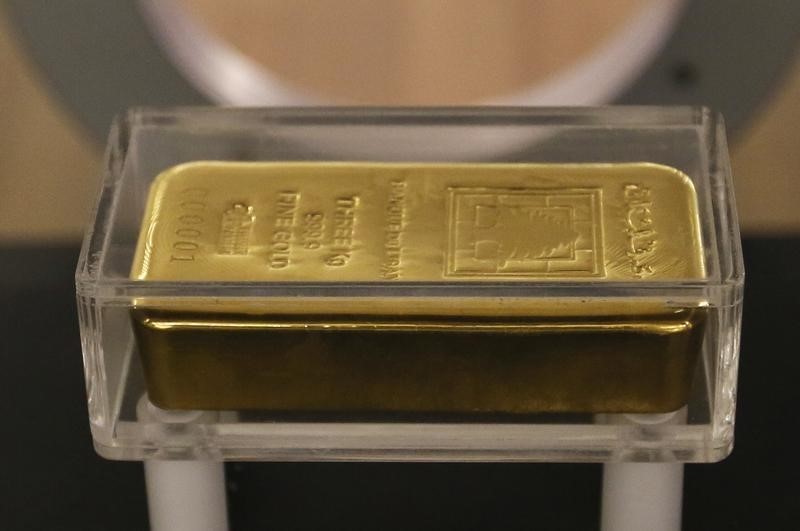* Options make up 46 pct of hedge book vs 16 pct a year ago
* Producers use collar structures to protect revenues
By Jan Harvey
LONDON, July 30 (Reuters) - Gold mining companies are turning increasingly to derivatives to lock in future revenues, as an industry still smarting from losing out on a 12-year bull run gets creative over protecting its income during the metal's current downturn.
While miners overall remain wary of hedging -- the outstanding global hedge book stood at just 6.2 million ounces at end March compared with 57.2 million a decade earlier -- those who do favour the strategy are leaning more strongly towards options.
Data released this month from Societe Generale (PARIS:SOGN) and GFMS analysts at Thomson Reuters showed options structures made up 46 percent of the global hedge book by the end of the first quarter of 2015, compared with just 16 percent in the same period a year before and 11 percent in 2013.
Hedging allows miners to lock in the price of their output, usually by selling future production forward. This offers protection from falling gold prices, but means they can lose out if prices rise sharply.
Big mining companies lost billions closing out hedges during a 12-year rally that took gold prices to record highs in 2011 just shy of $2,000 per ounce.
Since then, hedging has been heavily out of favour with most of the biggest miners, and prices have continued to decline, with last week's slump to 5-1/2 year lows seen opening the way to further losses.
Some miners are now stepping back into hedging, but the profile of those deals has changed. Their hedges tend to be smaller, cover shorter timeframes, are often project-specific, and are more frequently options-based.
Rather than simply selling metal forward, options allow miners to put together more complex structures like zero-cost collars to protect revenues.
"People don't like risk, but they don't like paying for insurance," Mitsui Precious Metals analyst David Jollie said.
"With options, if you just bought puts, you're paying money for them, but you might be able to cover that by selling calls some way above the market, and giving up some of the upside above that."
Under a collar structure, companies buy a put option, giving the option to sell at a given point, funded by the sale of a call option -- which gives the option to buy -- at a higher price.
If the price falls, the company is protected by exercising the option to sell at the strike price -- though if prices rise they lose the upside above the strike price of the call.
Options structures added last year by the likes of Polyus Gold PGIL.L helped to push the industry into net hedging for only the second time in 15 years.
Polyus used both zero-cost Asian collars and forward sales to put together the biggest hedging deal since the late 1990s. "Flexibility was the main reason behind choosing options over forwards," a spokesman for the company said.
Polyus expects gold to be rangebound over the next few years, he said, but cannot ignore downside risks to the price.
"If the gold price increases, it will be a good problem to have, as we hedged our output only partially. But if the market turns and the price falls, our cash flows are protected."
Australia's OceanaGold OGC.AX said it has hedged using New Zealand dollar gold collars.
"We bought a series of New Zealand gold put options, the cost of which was offset by the sale of a series of New Zealand gold call options at a higher strike price," it said.
"A collar provides slightly more flexibility," it added. "We achieve the spot price over a defined range, rather than achieving a single set price."
